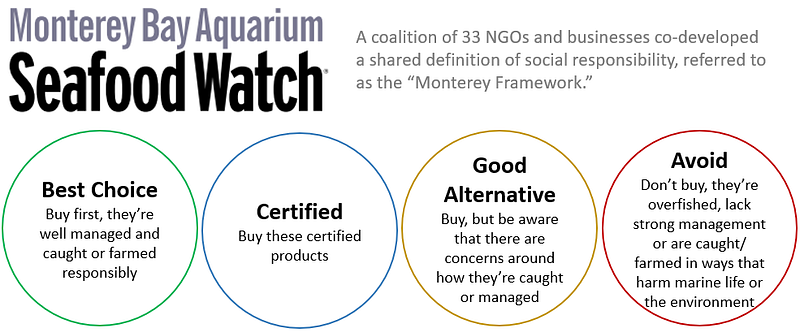There is no universally accepted standard for sustainability in the seafood industry. There are various certifications, labels and ratings that certainly serve as sensible guidelines, but ultimately the real impact comes from decisions that a company owner makes with regards to its supply chain. The seafood commercial industry is particularly difficult to track because of the numerous steps in the logistical product life cycle, and sometimes the seafood products you are consuming might be caught on US shores, shipped abroad to be processed and packaged, then shipped back to the United States as a consumer-ready product.
As a new seafood business owner, it was important to me to become educated prior to making important decisions around sourcing the fish that ends up in Blue Cove’s preserves. Working with the right partners is critical and something I spent a lot of time on. The selection of a partner was based on fishing practices: no longlines, trawling, gillnets or methods that may cause bycatch. Small fishing boats are preferred, as local as possible in relation to our production location. The Monterey Bay Aquarium Seafood Watch program is a guiding authority in tracking the availability of each fish specie in US shores and indicates safety levels of fishing in relation to quotas. Blue Cove and its partners are committed to aligning to these guidelines. With regards to the choice of fish, we first start looking at smaller size species that are in high levels of availability. Why? We think it’s important to diversify our sourcing from the overall seafood chain, and not just focus on the more popular large fish — the small ones are just as tasty and nutritious. Depending on the seasonal changes in the supply of fish species, we will consider larger fish as long as their availability (known as “biomass”) is high at that time.

Tins is our packaging of choice for various reasons. Besides our nostalgic attachment to the little box, there are environmental arguments for making them a great solution for preserving food. They are made of steel which has one of the highest recycling rates of any material in the United States, and can be recycled infinitely. Tins are resilient, light-weight and easy to transport. Our other favorite aspect is the long shelf life. In France, some prestigious Parisian brasseries pride themselves in serving sardine tins that are aged 10+ years, they track their vintages just like wine. And the longer the tins age, the more flavorful they become. Blue Cove’s mission is to pack fish with flavorful high-quality ingredients and provide tins that can be kept in household pantries year long, without compromising on taste. The long shelf life also impacts food waste levels: these are non-perishable products, they do not need to be discarded if they are not consumed quickly after their purchase. Did we make a case for tinned fish yet?

